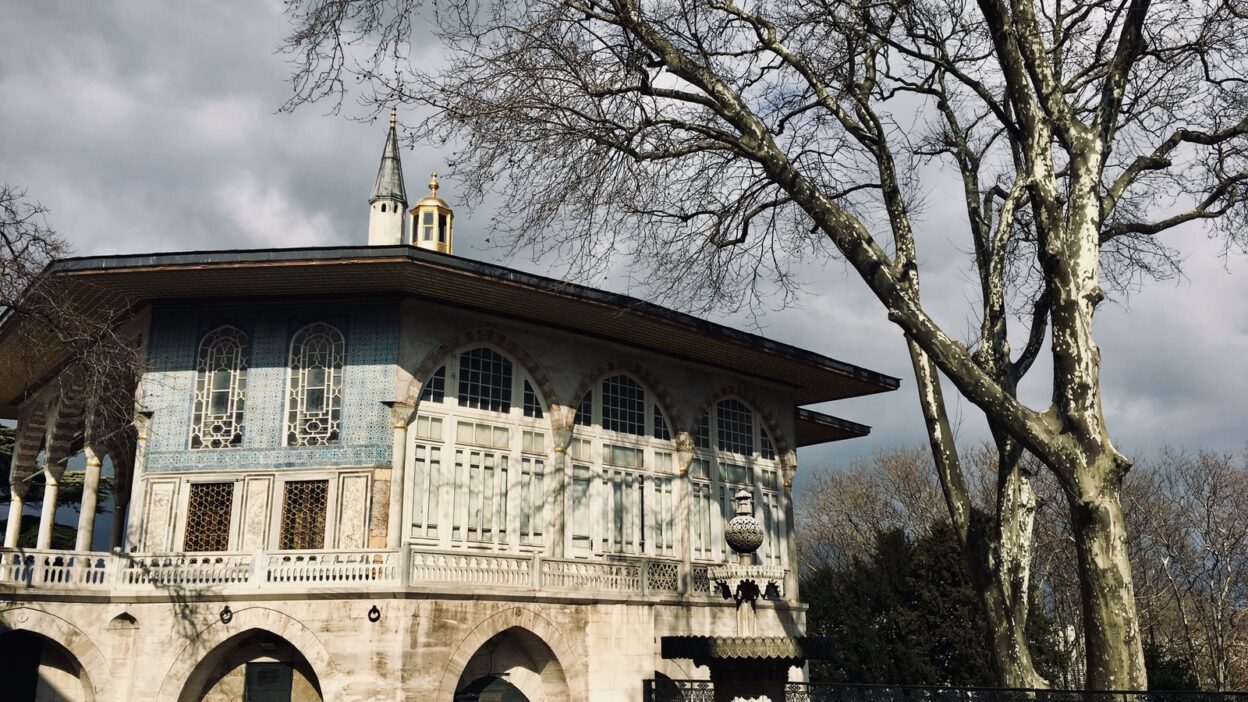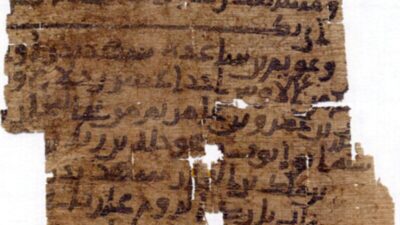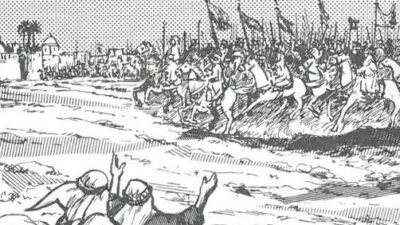Introduction
This article gives a brief biography of Imam al-Tabari and discusses the publication history of his magnus opus Ta’rīkh al-Rusul wa ‘l-Mulūk.
Abū Ja‘far Muh̩ammad ibn Jarīr ibn Yazīd al-Tabari (224–310/ 839–923) was born during the reign of al-Mu’taṣim in Āmul, a town in the province of T̩abaristān. His father who was a landowner, used his modest income to finance al-T̩abarī’s scholarly pursuits. al-Tabari’s intellectual prowess was evident at an early age; he memorised Quran by the age of seven, led the prayers at the age of eight and was studying h̩adīth when he was nine. At the age of twelve he left his home town to study in al-Rayy (modern day Tehran) where he studied under a number of teachers. These included Ibn Humayd (d/248/862) transmitted h̩adīth to Ahmed ibn Ḥanbal. And also and Ahmed b. Ḥammād al-Dawlābī who was a student of Sufyān b. ‘Uyayna From al-Dawlābī he studied the historical works of Ibn Ishāq.
He lived through the rule of the following twelve Caliphs; Al-Ma’mūm, Al-Mu’tassim, Al-Wāthiq. Al-Mutawakkil, Al-Muntaṣir, Al-Musta’in, Al-Mu’tazz, Al-Muhtadi, Al-Mu’tamid, Al-Mu’tadid, Al-Muktafi, and Al-Muqtadir.
His studies
After a stay of five years, at the age of seventeen, al-Tabari travelled to Baghdad, arrving in 241 /855, to study with Ahmed b. Ḥanbal but the latter died shortly before he had a chance to meet him. He then travelled to Bas̩ra and Kūfa and after two years he returned to Baghdad. During his stay, he tutored the son of the vizier ‘Ubayd Allah b. Yaḥya b. al-Khāqān (d.877) who was an ally of the powerful bureaucratic clan. Banū al-Jarrạ̄h. After an eight year stay in Baghdad, al-T̩abarī travelled to Syria where he benefited from some of the leading scholars of that region.
In 253/867 al-Tabari arrived in Egypt where he studied under some of the greatest scholars of both the Mālikī and Shāfi‘ī madhabs. Among them were the two famous Shāfi‘ī scholars, al-Muzani (d.264/878), al-Rabi’ b. Sulaymā̄n (d.270/790-1) as well the Mālikī Ibn ‘Abd al-Ḥakam family. After several years in Egypt al-T̩abarī returned to Baghdad. This period marked an end to his formal studies and he was to devote the rest of his life to teaching and writing. The two works for which he is best known for are – Taʾrīkh al-rusul wa ’l-mulūk wa ’l-k̲h̲ulafāʾ and tafsīr (Quranic exegesis) – j̲āmiʿ al-bayān ʿan taʾwīl al-Qurʾān.
His legal and theological alignment
Al-Tabari was well versed in all four madhhabs as well as the Zāhirī madhhab. Initially he was a Shāfi‘ī but after his return from Egypt al-Tabari developed his own legal school, the Jarīrī madhhab. Although he had many outstanding students, lack of patronage, fierce rivalry from the other four (and by now powerful) madhabs and as well as the lack of distinctiveness between his and the Shāfi‘ī madhhab meant the Jarīri madhhab died out within decades of al-Tabari’s death. The last adherent of his madhhab was a judge called al-Nahrawānī who died in 390/1000.
Despite the tension between al-T̩abarī and the Ḥanābila, his creed was almost synonymous with Ahmed b. Ḥanbal and this in evident in his creedal work Ṣarīḥ al-sunna1. In this book he affirms that the Quran is the uncreated speech of God and that the believers will see God on the Day of Judgement (in refutation of the Mu’tazila and Jahmiyya), that the actions of people are under the Will of God (in refutation of the Qadariyya), that the virtue of the Rāshidūn Caliphs was commensurate with their order of succession God (in refutation of the Shī‘ī) and that faith increases and decreases God (in refutation of the Murji’a). During al-T̩abarī’s lifetime, the eleventh Shī‘ī Imām, Ḥasan al-‘Askarī died. Al-Tabari denied the latter had any children thus rejecting the claim of the existence of the twelfth hidden Imām.
His detractors
Al-Tabari’s fame, his prodigious literary output and his bold use of ijtihād invariably led to envy and hostility from other scholars and in particular from the followers of the newly emerging Ḥanbalī madhab. Al-T̩abarī was accused by a certain Abū Bakr b. Abī Dāwūd (d. 316/929) of harbouring Shī‘ī sympathies, and also of distorting the attributes of God. Such accusations, made by a reputable scholar if proved true would tarnish al-Tabari’s credentials as an orthodox Sunnī. Hence al-Tabari was forced to vehemently deny these accusations. In a number of tracts, he affirmed what Sunnis called, the creed of ahl sunnah wa’l jamā’a. These tracts included Ṣarīḥ al-sunna and tabṣīr ulī ’l-nuhā wa-maʿālim al-hudā
Although he held Ahmed b. Ḥanbal in high esteem, al-Tabari controversially excluded him from the ranks of jurists in his book Ik̲h̲tilāf al-fuqahāʾ causing offence among the Ḥanbalīs. On one occasion it is reported that a group of Ḥanbalīs stoned his house on the pretext that al-Tabari had misinterpreted a verse of the Quran. The verse in question was 17:79 which referred to the Prophet’s ‘praiseworthy position’. The Ḥanbalīs, contrary to al-T̩abarī, interpreted this as meaning that the Prophet would be seated by God on his throne. However the extent of Ḥanbalī opposition to him is a matter of dispute among scholars. Al-Tabari’s died aged 84. His funeral was a small affair; he was buried in his house with only a few people praying over him.
Key political events during his lifetime.
When al-Tabari was 22 years old, the Caliph Mutawakkil (d.247/861) was assassinated which led to the nine-year anarchy at Sāmarrā. During this period three Caliphs were assassinated and a second siege of Baghdad (252/866) took occurred. The conflict at the centre accelerated the process of fragmentation of the empire. Some of the semi-autonomous states recognised the authority of the Caliph albeit nominally, however other rejected the ‘Abbāsids outright. The latter included the Fāṭimids, the Qarāmiṭa, and the Zanj rebels. The Aghlabids and the Tāhirids, on the other hand, recognised the authority of the Caliph.
During al-Tabari’s era, there existed bitter rivalry between two bureaucratic factions, Banū al-Furāt and Banū al-Jarrạ̄h for control of financial administration. The ascension of one of the two factions was made possible by its bribing the caliph, which would be immediately followed by the official confiscation of the wealth of the opposing faction and their supporters within the secretarial class. Much of this wealth would be pocketed by the victorious party to the detriment of the state coffers. According to Mårtensson, al-T̩abarī supported the policies of Banū al-Jarrạ̄h who were in favour of moderate (and centralised) taxation of the peasantry and cutting back on unnecessary administrative expenditure. The Banū al-Furāt on the other hand, farmed out tax collection to often unscrupulous individuals, causing immense hardship to the peasantry.
Al-Tabari’s concern with good governance is expressed in praise of the ‘Alīd al-Ḥasan b. ‘Alī al-Uṭrūsh who seized power in Ṭabaristan 302/ 914-5. He says about him: ‘People had never seen like of al-Uṭrūsh’s justice, his exemplary way of life and the way he established the truth’. Al-Tabari’s close relation with the famous wazīrs (chief ministers) ‘Alī b. ‘Īsā and al-Khāqān demonstrates his keen and active interest in good governance. Alī b. ‘Īsā was known as “the good vizier” due to his efforts to ensure good financial management. He took a personal interest in the welfare of al-T̩abarī. At the same time, due to the support he received from his father, he was able to remain financially independent from the government.
Publication history of the Ta’rīkh
The standard edition of the Ta’rīkh is the Leiden edition. This was prepared using a number of Arabic manuscripts by a team headed by M.J. de Goeje (d.1909). It was printed by Brill between the years 1879 and 1901.
The English translation of the Ta’rīkh is based on the Leiden edition and was initiated by Ehsan Yarshater in 1971. Completed in 1999 it runs into 38 volumes. As well as the translation, there are an additional two volumes in English; the first of these is an extract from al-T̩abarī’s supplement covering a list of his references from the Companions and Successors which was published in 1998. The second is an index to the entire work and was published in 2007.
Each volume covers approximately 200 pages of the Arabic text. The first five volumes cover pre-Islamic history from the Creation to the period just before the Prophet’s birth and are arranged chronologically. The remaining thirty-three volumes, starting with the hijra are arranged annalistically. Four volumes (6-9) cover the history of Mecca and life of the Prophet, in which al-T̩abarī utilises the works of Ibn Ishāq (d.151/767), al-Wāqidī (d.207/822) and Ibn al Kalbi (d.204/819). Eight volumes (10-17) cover the period of the Rāshidūn Caliphs in which he utilises Sayf b. ‘Umar (d.170-93/786-809), Ibn Ishāq, al-Wāqidī, Ibn al Kalbi, `Ali b. Muhammad al-Mada’ini (d. 855) and Abu Mikhnaf (d. 157/774). Eight volumes (18-26) cover the Umayyad period and twelve volumes (27-38) cover the ‘Abbāsid period up to 302 / 914-915.
Al-T̩abarī methodology in the Ta’rīkh
In terms of overall style, the Ta’rīkh resembles a book of hadith, i.e. each individual khabar is preceded by an isnād. Al-T̩abarī introduces each year with the main heading, “then entered the year x, mentioning the events that occurred in it.” Within each year, there are a number of sub-headings, each pertaining to a particular subject or event. Under each sub heading he brings a number of akhbār of varying length relating to this subject/event. (Akhbār is plural of Khabar. Kh̲abar “denotes a piece of information of a historical, biographical or even anecdotal nature)
Only rarely does al-T̩abarī explicitly comment by adding his own remarks, when he does it is usually brief and it takes the form of an introduction to the sub-heading. Occasionally his brief remarks are contained within the sub-heading for example regarding a scholarly difference of opinion or to mention the chronology of two significant events. The akhbār which cover a particular topic or event are placed together and in many cases either contradict each other or are a repetition2 There is no attempt by al-T̩abarī to reconcile the contradictions, nor is there any indication as to the correct view.
Use of the isnad
Al-T̩abarī does not comment on the authenticity of any of the reports, however he often gives the isnad. Al-‘Umari argues that by giving the isnād, al-T̩abarī is leaving the issue of authentication to future scholars. Akram Diya al-‘Umari. Khalidi, on the other hand, ‘presumes’ that al-T̩abarī expended great effort in choosing those reports that were considered by him to be reliable. Khalidi. In a similar vein Duri argues that al-T̩abarī’s only included reports that came from well-known and trustworthy historians.
References
Hugh N Kennedy, The Prophet and the Age of the Caliphates: The Islamic near East from the Sixth to the Eleventh Century, (Pearson Education, 2004), pp. 189-90
Franz Rosenthal, History of Al-Tabari Vol. 38, The: The Return of the Caliphate to Baghdad: The Caliphates of Al-Mu’tadid, Al-Muktafi and Al-Muqtadir Ad 892-915/Ah 279-302, (SUNY Press, 1985), p. 205.;
Zaman, Muhammad Qasim, Bianquis;, Th., Eddé, Anne-Marie, Carmona, A., Lambton, Ann K.S and Halil İnalcik, “Wazīr”, in: Encyclopaedia of Islam, Second Edition,
Ulrika Mårtensson, ‘Discourse and Historical Analysis: The Case of Al-Ṭabarī’s History of the Messengers and the Kings’, Journal of Islamic Studies, (2005), 306.
Christopher Melchert, The Formation of the Sunni Schools of Law: 9th-10th Centuries Ce, (Brill, 1997), p. 191.
Tarif Khalidi, Arabic Historical Thought in the Classical Period, (Cambridge University Press, 1994
Bosworth, C.E., “al-Ṭabarī”, in: Encyclopaedia of Islam, Second Edition
Franz Rosenthal, History of Al-Tabari Vol. 1, The: General Introduction and from the Creation to the Flood, (SUNY Press, 2015), p. 11.;
Akram Diya al-‘Umari, Madinan Society at the Time of the Prophet, (International Institute of Islamic Thought, 1991), p. 35.;
Abd al-Aziz Duri, The Rise of Historical Writing among the Arabs, (Princeton University Press, 2014), p. 70.
Ulrika Mårtensson, ‘Tabari, Makers of Islamic Civilization’, (New Delhi: Oxford University Press, 2009), pp. 70-1).
Notes
- Ibn Jarīr al-T̩abarī, Ṣarīḥ Al-Sunna, (Kuwait: Darul Khulafā lil Kitāb Islamiyya, 1985). ↩︎
- Repetition of, and contradiction between narrations is common feature of compilations such as al-T̩abarī’s Ta’rīkh as pointed out by Humphreys. R Stephen Humphreys, Islamic History: A Framework for Inquiry, (Princeton University Press Princeton, 1991), p. 73. ↩︎





